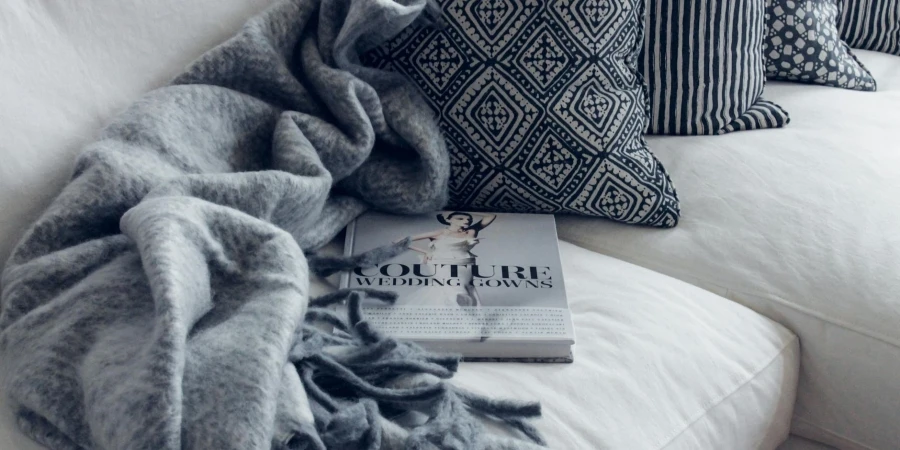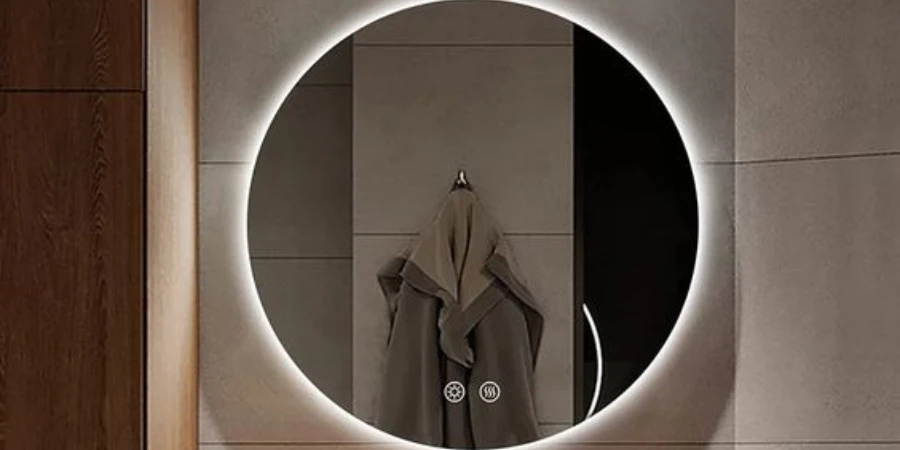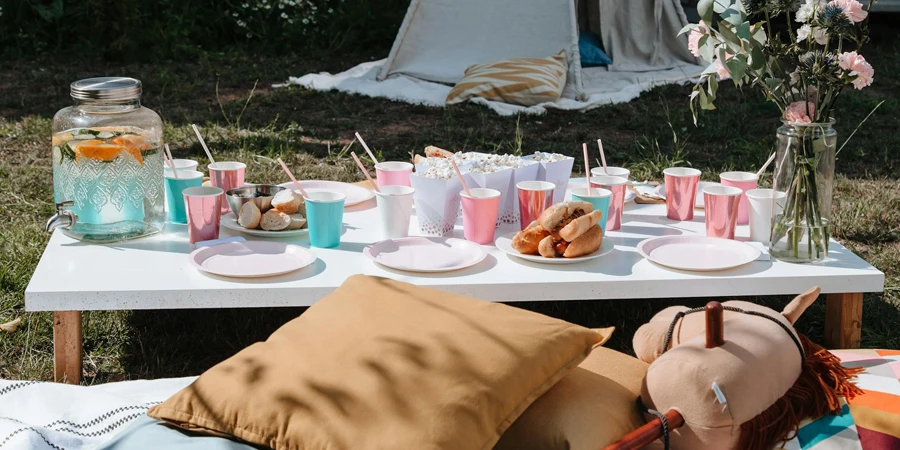Table of Contents
● Introduction
● Market overview
● Different types of wearable blankets
● Things to consider when selecting products
● Conclusion
Introduction
Wearable blankets provide an ideal combination of warmth and mobility, positioning them as a vital component of contemporary comfort. These innovative products meet diverse needs, from home lounging to outdoor activities, ensuring cozy comfort without restricting movement. The growing popularity of wearable blankets reflects their practicality and versatility in various settings. With a variety of materials and designs, they offer functional solutions tailored to modern lifestyles. This article delves into the market trends, types, features, and key considerations for selecting suitable wearable blanket.
Market overview

Growth trends
The wearable blanket market is experiencing robust growth, with a projected CAGR of 8.4%, expected to reach USD 24.8 billion by 2032. This growth is driven by increasing consumer interest in products that combine functionality with comfort. Factors such as a rising preference for luxury items, advancements in smart textiles, and a trend towards personalized home products significantly contribute to this market expansion. The ability to cater to both practical and aesthetic needs makes wearable blankets a sought-after commodity in the home and garden sector.
Consumer preferences
Consumer preferences are evolving, with a marked increase in demand for luxury, smart, and personalized wearable blankets. High-end materials like cashmere and advanced features such as temperature control are becoming more popular. Additionally, there is a growing interest in eco-friendly and sustainable options, reflecting broader environmental concerns among consumers. These preferences indicate a shift towards products that not only provide comfort and warmth but also align with lifestyle and ethical values.
Application and distribution
Primary applications for wearable blankets are found in households, but significant use is also noted in hospitals and hotels, where comfort and convenience are paramount. Leading distribution channels include hypermarkets and supermarkets, which dominate due to their extensive reach and the convenience they offer consumers. However, e-commerce platforms are rapidly growing, driven by the increasing trend of online shopping and the ease of home delivery.
Different types of wearable blankets

Hooded blankets
Hooded blankets provide comprehensive warmth with designs that include large, roomy hoods and spacious front pockets. These blankets typically feature good quality fleece or Sherpa materials, known for their excellent insulation properties. The oversized hood design ensures full head and neck coverage, which is crucial for retaining body heat in colder environments. Some models include elastic cuffs and adjustable drawstrings to secure the hood in place, enhancing their functionality for both indoor lounging and outdoor activities.
Poncho blankets
Poncho blankets are versatile and ideal for outdoor activities such as camping and hiking. They are crafted from durable materials like wool, acrylic, or high-thread-count cotton, which offer superior warmth and comfort. The design features a central head opening and wide, flowing sides that provide ease of movement and ventilation. Some poncho blankets incorporate traditional patterns and designs, adding cultural significance and aesthetic appeal. Advanced options include water-resistant coatings and reinforced stitching for enhanced durability in rugged conditions.
Wrap blankets
Wrap blankets are designed for maximum comfort during sedentary activities, such as reading or working from home. These blankets are often made from soft, breathable materials like cashmere or merino wool, which provide gentle warmth without overheating. The wrap-around design ensures even heat distribution across the body, while features like fringed edges or built-in fasteners offer added style and practicality. High-end versions may also include thermal linings or dual-layer constructions to enhance insulation.
Snuggle blankets
Snuggle blankets, featuring sleeves and sometimes zippers, are designed for maximum mobility without sacrificing warmth. Typically made from lightweight yet insulating materials like microfleece or Sherpa, these blankets allow users to move freely while staying covered. The sleeves are often equipped with elastic cuffs to prevent slippage, and front pockets add convenience for carrying small items. Some snuggle blankets also come with integrated foot pockets or detachable hoods, providing customizable warmth and coverage.
Heated blankets
Heated blankets incorporate built-in heating elements made from ultra-thin, flexible wires that distribute heat evenly across the blanket. These elements are often controlled by adjustable thermostats, allowing users to select their desired temperature settings. Modern heated blankets feature safety mechanisms such as auto-shutoff and overheat protection. They are usually constructed from machine-washable materials, making them easy to maintain. High-tech versions may include smart connectivity options, enabling users to control the temperature via mobile apps.
Things to consider when selecting products

Material choice: fleece vs. sherpa
When selecting a wearable blanket, the material is a crucial factor. Fleece, made from 100% polyester, offers excellent breathability and moisture-wicking properties. It is lightweight, with a typical weight ranging from 200 to 300 grams per square meter, making it suitable for indoor use and mild climates. Sherpa, also a polyester fabric, is heavier and denser, often weighing around 300 to 400 grams per square meter. It mimics the texture of sheepskin, providing superior warmth and insulation, ideal for colder environments. Both materials are machine-washable, but Sherpa requires gentle handling to maintain its plush texture.
Design features
Design features significantly enhance the functionality and aesthetic appeal of wearable blankets. Hoods, often lined with additional insulation, provide crucial head and neck coverage, essential for retaining body heat in colder temperatures. Front pockets, typically measuring around 8×10 inches, offer convenient storage for small items and can keep hands warm. Patterns and colors vary widely, with options for UV-reactive dyes that create unique designs in sunlight, adding a modern touch. Elastic cuffs and adjustable drawstrings ensure a snug fit, preventing slippage and enhancing overall comfort.
Maintenance and durability
Maintenance and durability are key considerations for wearable blankets. Fleece blankets can be machine-washed and dried on low heat, typically with a lifespan of over 50 wash cycles without significant wear. Sherpa blankets, while also machine-washable, should be dried at low temperatures or air-dried to prevent the fibers from matting. Advanced versions may include anti-pilling treatments and reinforced stitching, extending the product’s durability. Using a mesh laundry bag during washing can minimize friction, reducing the risk of pilling and maintaining the fabric’s integrity over time.
Additional factors
Additional factors such as breathability, warmth, weight, and style alignment play a crucial role in the selection process. Materials like cotton or lightweight fleece provide superior breathability, with air permeability ratings typically around 150-200 CFM (cubic feet per minute), making them ideal for users who tend to overheat. Heavier options like Sherpa or wool offer higher thermal resistance, with R-values ranging from 3 to 4, ensuring maximum warmth. The weight of the blanket, often measured in GSM (grams per square meter), affects comfort and mobility, with lighter options around 200 GSM and heavier ones up to 400 GSM. Style choices range from minimalist designs to intricate patterns, including options for customizable prints and embroidered logos, catering to various aesthetic preferences.
Conclusion

Wearable blankets offer unparalleled versatility and comfort, making them a valuable addition to both personal and commercial settings. Their benefits range from providing warmth and mobility to enhancing user convenience through thoughtful design features. Selecting the right material, such as fleece for breathability or Sherpa for superior warmth, and incorporating functional elements like hoods and pockets, ensures optimal performance and satisfaction. Investing in good quality wearable blankets tailored to specific needs can significantly improve comfort and usability, making them an essential product in the home and garden market.








